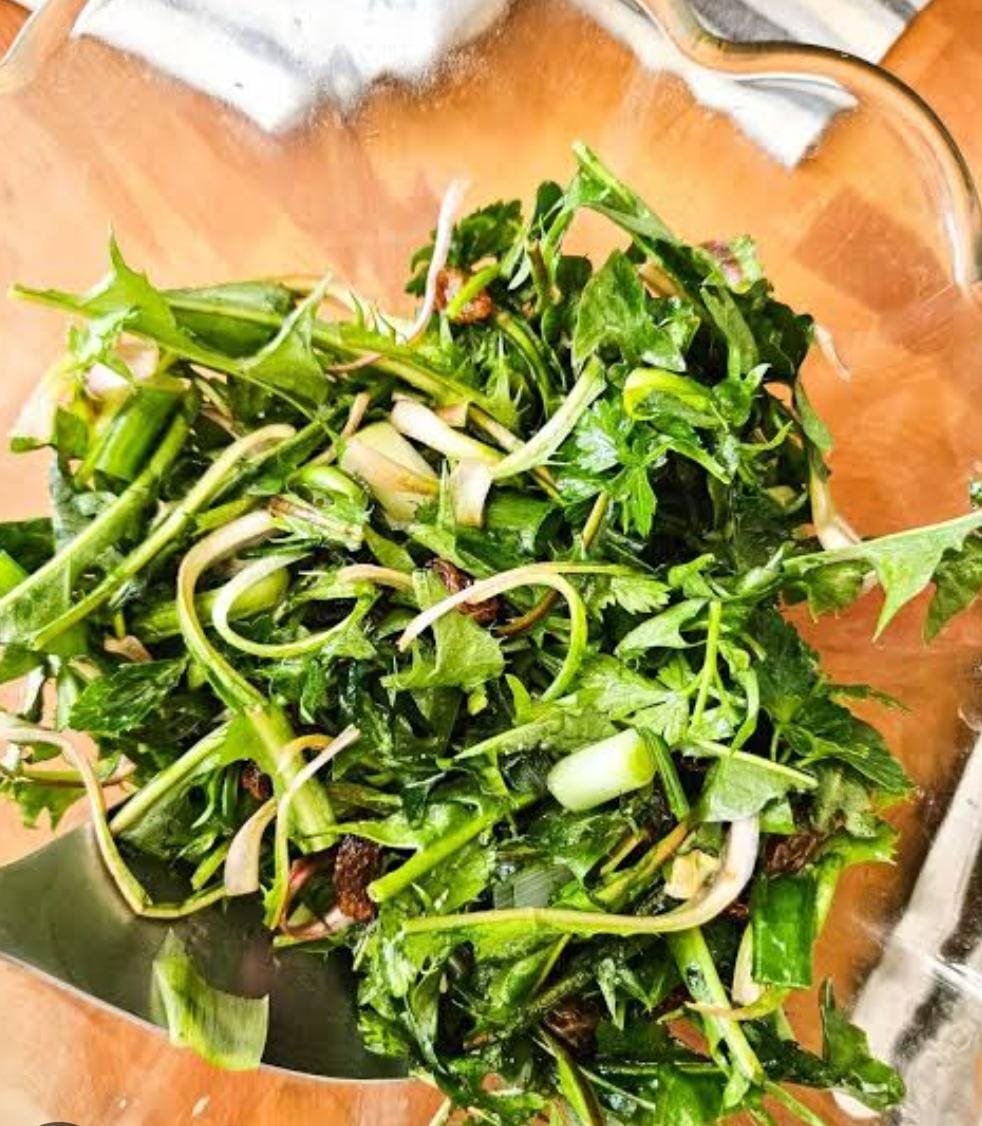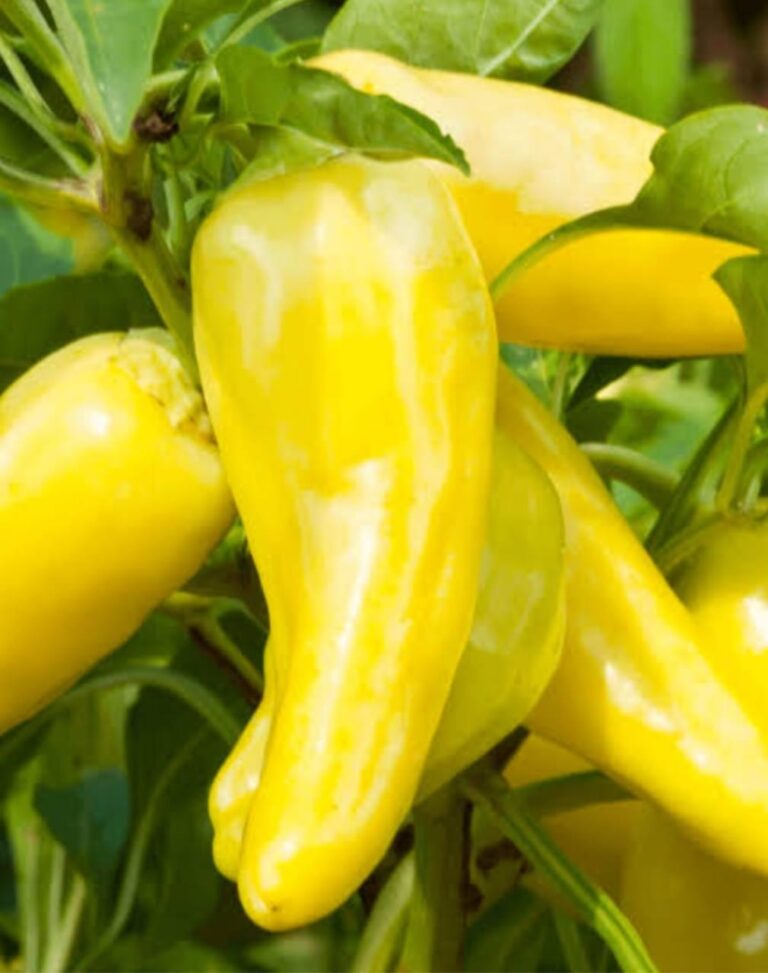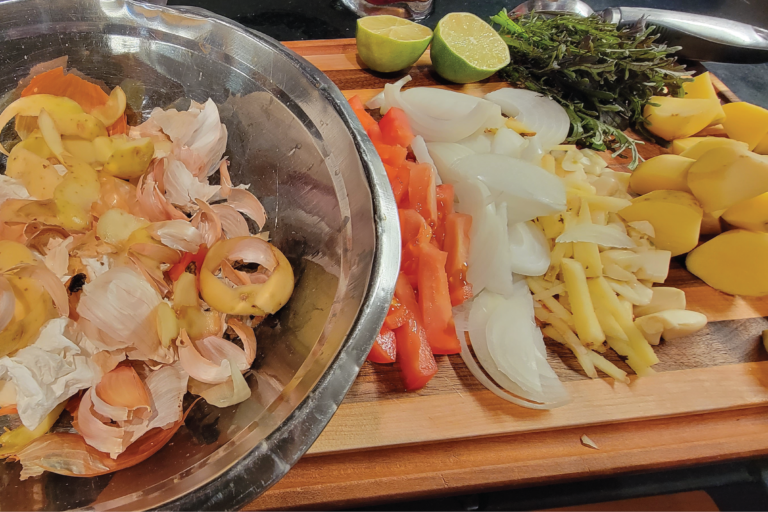Are Dandelions Edible? 10 Exclusive Health Benefits
Introduction
Despite their nutritional and culinary value, the dandelions (Taraxacum officinale), one of the world’s most recognizable and hardy plants, have long been rejected as a weed. Dandelions, which are native to Eurasia but are now found in temperate climes all over the world, have been utilized for ages in traditional medicine, folk treatments, and regional cuisines. A growing movement toward sustainable and foraged foods has renewed interest in this humble plant, spurring a scientific reexamination of its edibility, nutritional value, and health advantages. I have also written about edible flowers before on various blogs. Today, we will discuss dandelions, their botanical review, history, nutritional composition, and various health benefits.
Botanical Overview
Dandelions are part of the Asteraceae family, which includes sunflowers, chicory, and lettuce. Taraxacum is a genus of around 250 species, with Taraxacum officinale being the most well-known and consumed. The plant has a basal rosette of sharply serrated leaves, a hollow, unbranched stem with milky latex, and a bright yellow composite flower that matures into a spherical seed head. Dandelion roots, stems, leaves, buds, and flowers are all edible, each with its texture, flavor, and nutritional profile. The plant thrives in disturbed soils and is commonly found in lawns, meadows, roadside areas, and gardens.
Ethnobotanical History
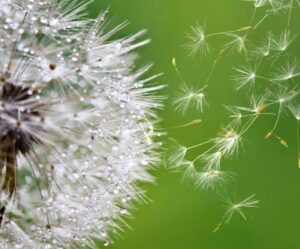
Dandelions have appeared in the pharmacopeias of many cultures. Dandelion (Pu Gong Ying) is classified as a cooling herb that is used to heal infections, reduce inflammation, and promote liver function in Traditional Chinese Medicine (TCM). In Native American herbal medicine, the plant was used as a poultice for skin diseases and as a diuretic.
Dandelions are described in medieval European writings as a treatment for jaundice, spleen issues, and general digestive problems. John Gerard, a 16th-century herbalist, referred to the plant as “Herba solis,” indicating its brilliant aspect and relationship with vigor.
Nutritional Composition
Dandelions are an excellent source of vitamins and minerals. Their leaves are especially high in vitamins A, C, and K, with modest quantities of vitamin E, various B-complex vitamins, and folate. A 100-gram portion of raw dandelion greens includes roughly:
Vitamin A: 508% of the recommended daily intake (RDI).
Vitamin C: 35% of the recommended daily intake.
Vitamin K: 535 percent of the RDI.
Calcium: 10 percent of the RDI.
Iron is 9% of the RDI.
Potassium is 9% of the RDI.
In addition to vital elements, dandelions are high in polyphenols, carotenoids (including lutein and zeaxanthin), and fiber. The root is particularly famous for its inulin content, which is a form of soluble fiber that promotes gut flora.
Edibility of Dandelion Leaves
Dandelion leaves taste best in early spring, before the plant blooms. During this stage, the greens are soft and have a mildly bitter, peppery taste similar to arugula or endive. As the plant matures, the bitterness increases due to increased quantities of sesquiterpene lactones, which are also found in other bitter plants such as chicory and wormwood.
Young leaves can be served fresh in salads or blended into green smoothies. They are also suitable for sautéing, steaming, or including in soups, as cooking reduces their bitterness. When dried, the leaves can make an antioxidant-rich tea with moderate diuretic qualities.
Culinary Uses of Flowers
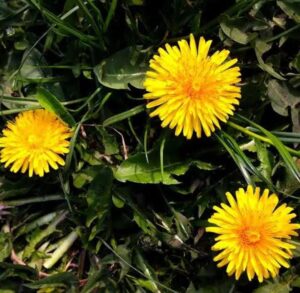
The golden blooms of dandelions have a subtle, sweet, and flowery flavor, making them excellent for a variety of culinary uses. Dandelion blossoms include flavonoids such as luteolin and apigenin, are used to infuse vinegars, syrups, and wines. Traditional dandelion wine, which is popular in rural areas of Europe and North America, is created by fermenting the petals with sugar, citrus zest, and water.
Petals can be added to salads for color and nutrients, or blended into pancake and muffin mixes. Some cultures batter and fry whole flower heads to make fritters that highlight the blossom’s delicate texture.
Nutritional and Medicinal Role of the Roots
Dandelion roots have traditionally been utilized in herbal therapy, notably to detoxify the liver and kidneys. Modern phytochemical study reveals that the root includes beneficial components such taraxasterol, chicoric acid, and inulin.
When collected in late fall, following the first frost, the roots of dandelions are at their most nutritious, with high levels of stored starch. These can be roasted and ground to create a caffeine-free coffee substitute, a process that originated in 19th-century Europe. The end product is a slightly bitter, earthy beverage that contains prebiotics and is beneficial to the liver.
Root, whether boiled or roasted, can be added to stews, grain bowls, or root vegetable medleys. When fermented, the root adds to probiotic-rich condiments like kimchi or sauerkraut.
Stems and Buds: Underutilized but Edible
Dandelions hollow stems are technically edible, despite their high latex content and harshness. The sap contains taraxinic acid and other sesquiterpene lactones, which add to the plant’s flavor and biological effects. While rarely taken on their own, the stems can be juiced in tiny amounts or combined into bitter herb tonics.
The flower buds, which are sometimes ignored, are more sensitive and less bitter than the leaves or stems. They can be pickled to make a caper-like garnish, or sautéed in olive oil and garlic for a nutrient-rich side dish.
Scientific Research and Health Benefits
1. Anti-Inflammatory Properties
- Dandelion extracts have been shown to effectively suppress pro-inflammatory enzymes, particularly cyclooxygenase-2 (COX-2), which plays a significant role in the inflammatory response.
- Additionally, compounds such as taraxasterol, along with other bioactive substances found in dandelions, have demonstrated the ability to inhibit the production of inflammatory cytokines. By doing so, they help reduce edema and tissue inflammation, offering therapeutic benefits in managing inflammatory disorders. This comprehensive action not only alleviates symptoms but also contributes to overall tissue health and recovery.
2. Antioxidant Effects
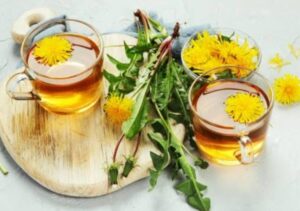
- Dandelions are a nutrient-dense plant known for their high content of beneficial compounds. They are rich in polyphenols, which are antioxidants that help combat oxidative stress and inflammation in the body. Additionally, dandelions contain various flavonoids, such as luteolin and apigenin, which are recognized for their anti-inflammatory and immune-boosting properties. These flavonoids may also contribute to cardiovascular health.
- Furthermore, dandelions are an excellent source of carotenoids, including beta-carotene and lutein. Beta-carotene, a precursor to vitamin A, plays a vital role in maintaining healthy vision. Lutein is particularly important for eye health, as it helps protect against age-related macular degeneration. Overall, the variety of these compounds makes dandelions a valuable addition to a healthy diet.
- Certain chemicals serve as potent antioxidants, effectively neutralizing free radicals in the body. Free radicals are unstable molecules that can cause oxidative stress, leading to cellular damage and contributing to various age-related health problems. By combating these harmful molecules, antioxidants help protect cells from deterioration, promote overall cellular health, and ultimately support longevity while reducing the risk of age-associated diseases.
3. Anti-Cancer Potential
In vitro research (for example, the University of Windsor) suggests that dandelion root extract contains the following:
- The root extract triggers apoptosis (programmed cell death) in melanoma, leukemia, and pancreatic cancer cells.
- It inhibits cancer cell proliferation without harming healthy cells.
- Active phytochemicals like chicoric acid may enhance immune surveillance against tumors.
4. Liver Health Support
- Historically, this herb has been valued as a natural remedy for supporting liver health, often referred to as a liver tonic due to its potential protective and restorative properties. Recent scientific research, however, has revealed that it may also significantly enhance bile production, which is crucial for digestion and the absorption of fats and fat-soluble vitamins. These findings suggest that the herb could have broader applications in promoting digestive health and liver function than was previously understood.
- The activity of phase I and phase II liver detoxification enzymes is enhanced. These enzymes are essential for the body’s ability to metabolize and eliminate pollutants and toxins. Phase I enzymes modify toxic substances through processes such as oxidation, reduction, or hydrolysis, which helps make them more water-soluble. Following this, phase II enzymes conjugate the modified compounds with other substances, facilitating their excretion from the body. Together, these processes significantly improve the liver’s ability to cleanse the bloodstream and support detoxification.
- Taraxasterol and sesquiterpene lactones are compounds that are believed to play a significant role in enhancing liver function. Taraxasterol, a triterpene found in various plants, is thought to support liver health due to its potential antioxidant and anti-inflammatory properties. These characteristics may help reduce oxidative stress and inflammation in the liver, thereby promoting overall liver function.
- Sesquiterpene lactones are a diverse group of natural compounds found in many plant species. They have been associated with several health benefits, particularly for liver health. These compounds may help regenerate liver cells and enhance metabolic processes within the organ. Overall, they show promise for supporting liver health and improving its physiological functions.
5. Digestive Benefits
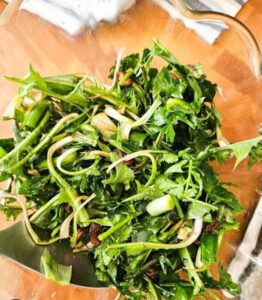
- Dandelion root is rich in inulin, a type of prebiotic fiber that plays a crucial role in promoting the growth and activity of beneficial gut bacteria, particularly Bifidobacteria. These healthy microbes are essential for maintaining a balanced gut microbiome, which can aid in digestion, improve nutrient absorption, and support overall gut health. By feeding these friendly bacteria, inulin may also help enhance the immune system and reduce inflammation in the digestive tract, contributing to improved gut function and well-being.
- Supports digestive regularity by enhancing gut motility, which helps maintain consistent bowel movements. Additionally, it effectively reduces bloating, alleviating discomfort associated with gas and fullness. Furthermore, it optimizes the absorption of essential nutrients from food, ensuring that the body can efficiently utilize vitamins and minerals for overall health.
6. Blood Sugar Regulation
- Research conducted on animals has shown that the extract of dandelions has the potential to enhance insulin sensitivity. This means that the compounds found in dandelions may help cells respond better to insulin, which is crucial for regulating blood sugar levels. Improved insulin sensitivity can play a significant role in preventing or managing conditions such as type 2 diabetes. These findings suggest that incorporating dandelion extract into a diet or treatment plan could offer benefits for metabolic health, although further studies in humans are necessary to confirm these effects.
- It may help decrease fasting blood glucose levels, which are the levels of sugar in the blood after not eating for an extended period. Additionally, it may contribute to lowering the spikes in blood sugar that occur after meals, known as postprandial blood sugar increases, thereby aiding in better overall blood sugar management.
- Chicoric acid has been found to potentially inhibit the activity of key enzymes involved in carbohydrate digestion, specifically α-amylase and α-glucosidase. α-Amylase is responsible for breaking down complex carbohydrates into simpler sugars, while α-glucosidase further digests these sugars in the small intestine. By blocking these enzymes, chicoric acid may slow down the digestion and absorption of carbohydrates, which could have implications for blood sugar regulation and weight management.
7. Cholesterol and Lipid Profile Improvement
- Research utilizing various animal models has demonstrated significant decreases in several key lipid parameters, specifically total cholesterol levels, low-density lipoprotein (LDL) cholesterol, which is often referred to as “bad” cholesterol due to its association with cardiovascular issues, and triglycerides, which are another type of fat found in the blood. These findings suggest that interventions tested in these models could potentially lead to favorable outcomes in managing lipid profiles and reducing the risk of heart disease.
- When included as a regular part of your diet, this substance has the potential to increase levels of high-density lipoprotein (HDL), commonly referred to as good cholesterol. HDL plays a crucial role in transporting cholesterol away from the arteries and back to the liver, where it can be processed and removed from the body. Elevating HDL levels can contribute to better heart health and reduce the risk of cardiovascular diseases.
8. Mild Diuretic Activity
- Dandelion Leaves, derived from the common plant Taraxacum officinale, are recognized for their natural diuretic properties. This means that it can help increase urine production in the body, which aids in flushing out excess water and waste. By promoting urination, dandelion leaf may effectively reduce water retention, helping to alleviate issues related to bloating and swelling. Additionally, its high potassium content can support healthy electrolyte balance, making it a beneficial natural remedy for those looking to enhance their kidney function and overall fluid regulation.
- Unlike traditional pharmaceutical diuretics, which often lead to a loss of potassium and may cause electrolyte imbalances, this alternative option is rich in potassium. This characteristic not only supports the maintenance of proper electrolyte levels in the body but also helps to prevent hypokalemia, a condition characterized by low potassium levels. Ensuring adequate potassium intake is crucial for various bodily functions, including muscle contractions and maintaining a healthy heart rhythm.
9. Cardiovascular Health
- Dandelions, a common and often undesired plant, may play a beneficial role in managing blood pressure levels. This effect is largely attributed to their significant potassium content, which is essential for regulating fluid balance and maintaining healthy blood pressure. Additionally, dandelions possess natural diuretic properties, meaning they can promote increased urine production. This diuretic effect can help the body eliminate excess sodium and fluid, further contributing to lower blood pressure readings. Together, these characteristics make dandelions a valuable addition to a diet aimed at promoting cardiovascular health.
- Antioxidants play a crucial role in reducing arterial inflammation and mitigating oxidative damage, both of which are significant contributors to the development of atherosclerosis. By neutralizing free radicals—unstable molecules that can cause cellular damage—antioxidants help to protect the lining of blood vessels. This protective action decreases inflammatory responses within the arteries, which can lead to plaque buildup and narrowing of the arteries. As a result, maintaining a diet rich in antioxidants may help prevent the progression of atherosclerosis and promote overall cardiovascular health.
10. Immune Support
- The immune-modulating properties of certain compounds, specifically luteolin and chicoric acid, play a significant role in enhancing the body’s ability to respond to infections. Luteolin, a flavonoid found in various fruits and vegetables, has been shown to possess anti-inflammatory and antioxidant effects, which contribute to the regulation of immune responses. Similarly, chicoric acid, a phenolic compound primarily derived from chicory plants, exhibits immunomodulatory abilities by influencing cytokine production and promoting a balanced immune reaction. Together, these substances can bolster the immune system, potentially leading to improved resistance against pathogens and better overall health.
- Recent research indicates that dandelion, a well-known flowering plant, may play a significant role in enhancing the activity of macrophages, which are crucial cells in the immune system responsible for detecting and eliminating pathogens. This increase in macrophage activity could lead to a more robust immune response. Furthermore, dandelion may contribute to the regulation of cytokine balance, which involves the complex network of signaling molecules that facilitate communication between cells during immune responses. By promoting a balanced cytokine profile, dandelion might help ensure that the immune system is both effective in fighting off infections and able to avoid excessive inflammation, which can lead to tissue damage and other health issues.
Sustainability and Foraging Considerations
Dandelions, unlike cultivated greens, do not require irrigation, fertilization, or pesticides to grow, making them an environmentally friendly food source. Foraging dandelions lowers food waste, increases biodiversity, and reconnects people with their local ecosystems.
However, prudence is advised. Dandelions should only be picked in locations that are free of herbicides, pesticides, and heavy metal poisoning. Foraging in urban parks, roadside areas, and industrial zones is often dangerous. To ensure optimal safety, seek natural patches in organic gardens or known clean regions, and always properly wash before eating.
Furthermore, while dandelions are not endangered and are considered invasive in many areas, ethical foraging techniques are still required. Harvest sparingly and avoid uprooting entire plants unless you want to use the roots, protecting the habitat for pollinators such as bees, who rely significantly on early-blooming dandelions for nectar.
Allergy and Toxicity Concerns

Dandelions are normally safe to eat, although some people may have adverse responses, especially those who are allergic to other plants in the Asteraceae family (such as ragweed, daisies, and marigolds). Contact dermatitis can result from the plant’s latex, and consuming large amounts may cause gastrointestinal distress in sensitive people.
Patients taking diuretics or anticoagulants should consult their doctors before consuming dandelion on a regular basis, since it may interact with these medications due to its vitamin K concentration and natural diuretic action.
Preservation and Storage
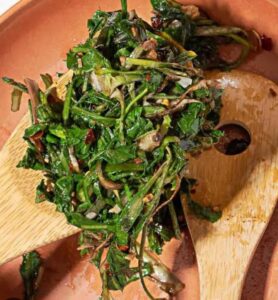
Fresh green dandelions can be refrigerated for up to five days if wrapped in damp paper towels and sealed in a plastic bag. The leaves can also be blanched, frozen, or dehydrated for extended usage in teas and soups.
Flowers should be utilized soon after harvest to maintain flavor and color, but they can also be frozen or infused into alcohol or honey for preservation. Roots, after thorough cleaning and slicing, can be dried and stored in sealed containers for months. Roasted root grounds should be stored in cool, dry places to avoid deterioration.
Culinary Innovation and Modern Use
Chefs and food developers are increasingly using dandelions because of their varied flavor profile and nutritional value. Dandelion pesto, made from raw greens, garlic, and sunflower seeds, is gaining favor among plant-based eaters. Flower petals are used to adorn desserts in fine dining, while fermented dandelion kimchi is a probiotic experiment.
Artisanal producers have also started making dandelion-based beers, bitters, and cordials, taking use of the plant’s bitterness and digestive-stimulating properties. In the world of herbal mixology, dandelion syrups and tinctures add fascinating overtones to both cocktails and nonalcoholic beverages.
Conclusion
Dandelions are at the confluence of food, medicine, and environment. Far from being a weed, Taraxacum officinale provides a wealth of nutritional and medicinal advantages that span nations and millennia. Its total edibility, from blossom to root, makes it an excellent choice for sustainable foraging, nutritional diversification, and functional nutrition.
The dandelion, whether sautéed in olive oil, brewed as root tea, or fermented as a natural tonic, is a powerful reminder of nature’s wealth hidden in plain sight. As current science confirms the traditional wisdom surrounding this plant, the dandelion is prepared to retake its position at the table—not as an invader, but as an important ally in human health and culinary innovation.

